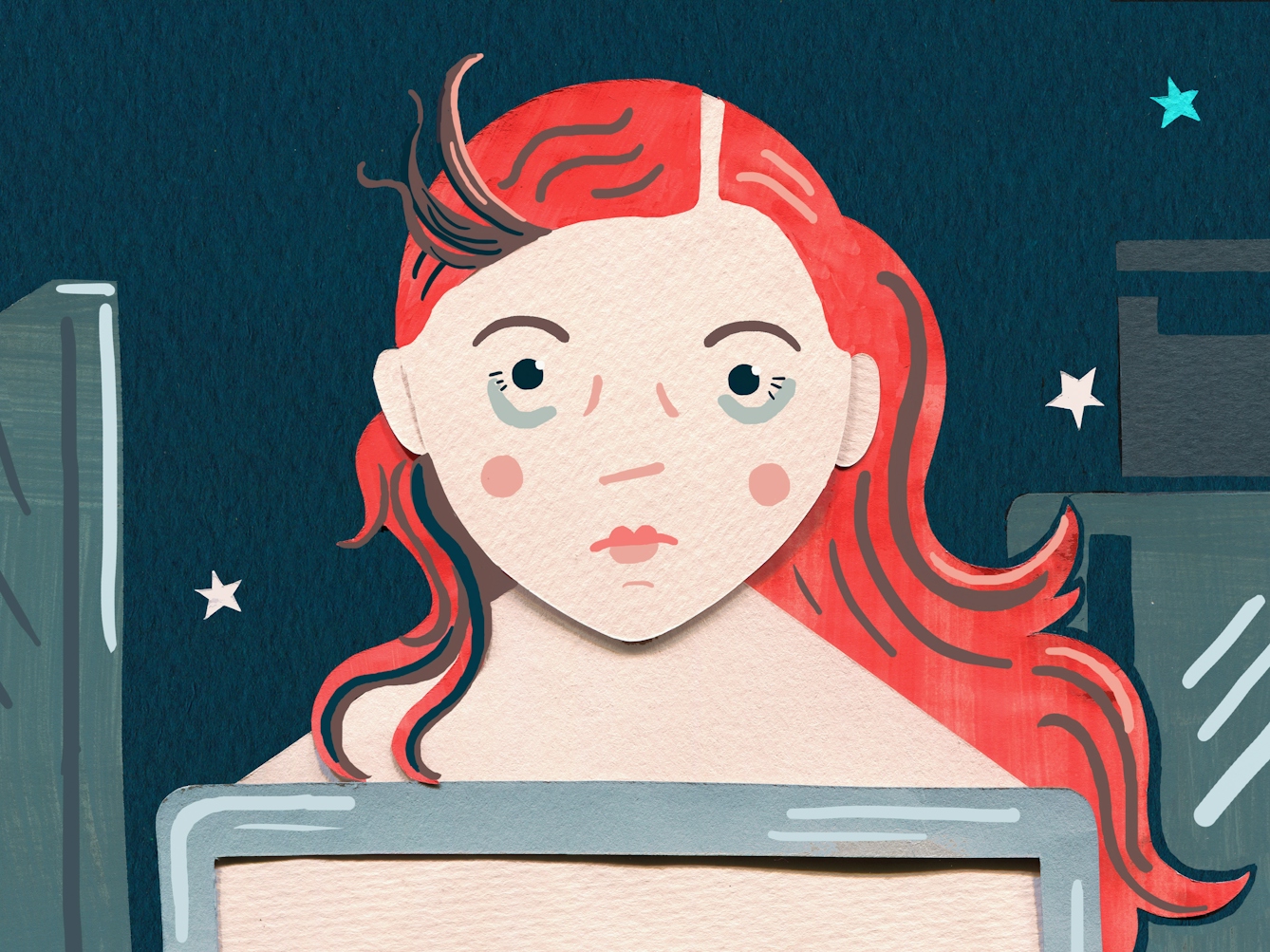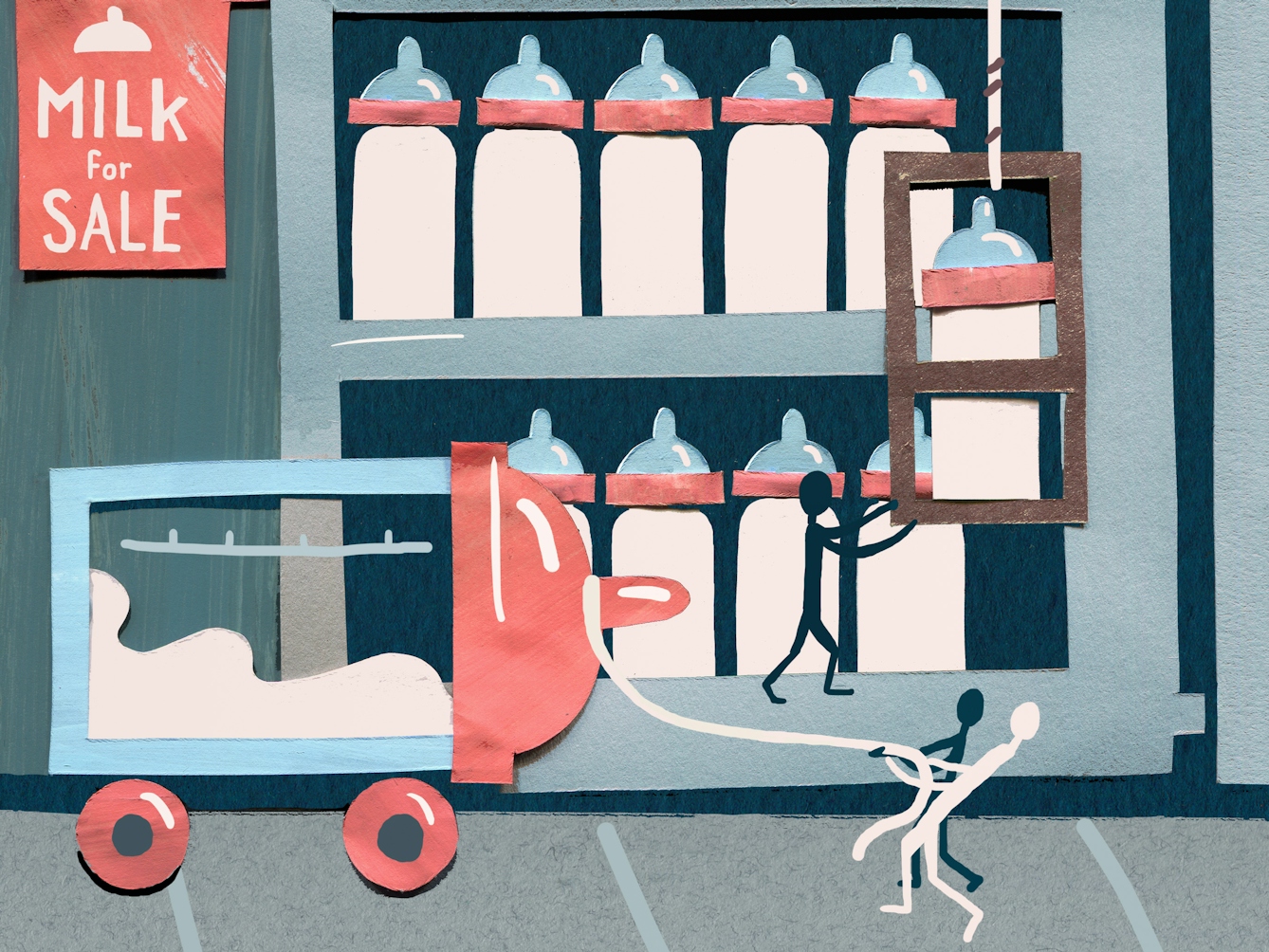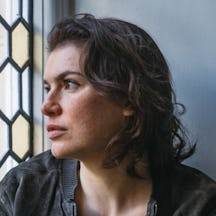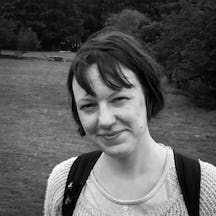Fearing her milk supplies might dry up, new mum Alev Scott started pumping between feeds. She soon became an expressing expert, her freezer filling with breastmilk her baby would ultimately never need. Alev didn’t want to simply throw it away and so she began to investigate other options. In part one of a six-part series examining how human milk has been traded across time, Alev discovers a complicated world where genuine need meets surprising sexual demands.
A freezer full of breastmilk
Words by Alev Scottartwork by Vicky Scottaverage reading time 5 minutes
- Serial

I gave birth to my first child during a snowy Amsterdam lockdown in January 2021. Cut off from family and friends, I was daunted by motherhood and, in particular, breastfeeding. Irrationally convinced that my milk supply would dry up, I bought an expensive electric breast pump which looked and sounded like an instrument of torture.
Gingerly experimenting with the ‘suction’ and ‘speed’ dials, I learned to use it deftly, pumping in the middle of the night and twice a day, between breastfeeding my daughter. The more I pumped, the more my breasts produced. Soon I had an oversupply and a freezer full of earnestly marked little sachets (“150ml, 15th February 6pm”), which my baby would never consume.
In the seamless nights and days following the birth, I measured reality in grams and millilitres, obsessed by my baby’s weight and my own milk production as a reflection of my ability to feed her. My self-worth fluctuated accordingly: if she gained 30 g I was ecstatic, while a loss of 10 g reduced me to tears. Raging hormones were largely to blame, but in hindsight, I was grappling with a novel problem: how to measure my performance as a mother.
Slowly, I adjusted to the responsibility of keeping my new baby alive with desexualised yet enormous breasts. She grew. I relaxed. But I continued to pump.
Weeks later, back in the UK with another full freezer, I started researching how to donate my stores to premature babies and, in doing so, stumbled across the commercial breastmilk market. I discovered that it’s far easier to sell breastmilk to strangers on the internet than to go through the rigorous screenings required by a hospital milk bank.

“Cut off from family and friends, I was daunted by motherhood and, in particular, breastfeeding.”
I trawled online breastmilk marketplaces and soon uncovered a world of health zealotry and wellness buzz, genuine need, and bizarre sexual demands. At the same time, I read academic articles about the historic practices of wet-nursing (breastfeeding another person’s baby for payment) and cross-feeding (breastfeeding another person’s baby for free).
I imagined how it would feel to breastfeed a stranger’s child, or to give my own to be fed by – and bond with – another woman. With or without money changing hands, it seemed unthinkable, yet I knew countless women had done it.
Millennia of mixed messages
While breasts have long been worshipped as symbols of fertility and erotic desire, they have always had a vital function – and a price. The first infant formula was patented in 1865, and human-milk substitutes date back further, but, in general, babies have always depended on breastmilk to survive. For millennia, women have monetised their milk: the ancient practice of wet-nursing remained widespread until the end of the 19th century, while today breastmilk is widely bought and sold online.
Breasts are difficult to view in a neutral way, even when they’re performing a biological function.
Breasts are difficult to view in a neutral way, even when they’re performing a biological function. The virgin breasts of the Madonna in Renaissance paintings, for example, are first and foremost holy symbols, literally serving God.
Exposed breasts today, whether in art or more humdrum settings – including online breastmilk marketplaces – seem to be overwhelmingly sexualised. Prudish attitudes linger around breastfeeding, and it’s not uncommon to be asked to move or cover up in public places. It happened to a close friend of mine as recently as 2021, while other notorious incidents have been reported in the press.

“For millennia, women have monetised their milk: the ancient practice of wet-nursing remained widespread until the end of the 19th century.”
At the same time, women who have failed to breastfeed, or chosen not to, have long been criticised. A famously violent rejection of breastfeeding is expressed by Shakespeare’s Lady Macbeth, who prays to unseen spirits to “unsex me here… Come to my woman’s breasts, And take my milk for gall” (‘Macbeth’, Act 1, Scene 5). Her later soliloquy conjures up an image far more gruesome than any murder Macbeth commits, because it violates our expectations of maternal instinct:
I have given suck, and know
How tender ’tis to love the babe that milks me
I would, while it was smiling in my face,
Have plucked my nipple from his boneless gums
And dashed the brains out, had I so sworn
As you have done to this
History is rife with mixed messages about breastfeeding’s practical desirability. For centuries, wealthy women gave their babies to wet nurses, largely because of social convention, and wet nurses in turn gave up feeding their own babies to feed those of wealthier women.
Today many women do not breastfeed – for some it’s a choice, for others breastfeeding simply isn’t an option. When I was pregnant, I remember feeling conflicted about the “breast is best” slogan that dates from the 1970s – while I wanted to breastfeed, I could see why the slogan is viewed as socially regressive, especially for those who choose or need to return to work soon after birth, or who struggle to breastfeed, for whatever reason.
As I began to research the commercial breastmilk market, I realised it could be viewed in two very different ways: a lucrative opportunity for nursing mothers to help other parents and carers in need, and a problematic industry where both buyers and sellers were vulnerable to exploitation.
Meanwhile, my freezer was filling up with unused breastmilk. I needed to figure out what to do with it.
About the contributors
Alev Scott
Alev Scott is a journalist and author. Previously based in Istanbul and Athens, she has written about politics and culture in the Mediterranean region for the Financial Times, the Guardian, Harper’s Magazine and Newsweek, among others. Her books are ‘Turkish Awakening’, ‘Ottoman Odyssey’ and ‘Power and the People’.
Vicky Scott
Vicky Scott is a Sheffield-based freelance illustrator who specialises in creating colourful and eye-catching mixed-media collages. Her work is inspired by Art Deco, 1960s psychedelia, mid-20th-century travel posters, and the natural world. To date, she has been commissioned to illustrate for a diverse range of clients including Microsoft, Cheltenham Festivals, the Postal Museum, Waitrose and the RSPB.

